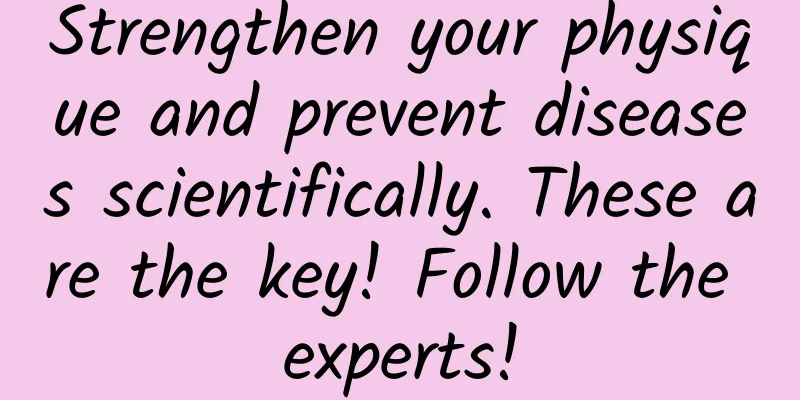The latest "mask order" has been issued! National Center for Disease Control and Prevention: Masks are still required in these scenarios

|
Guidelines for the public to wear masks to prevent novel coronavirus infection (April 2023 edition) Wearing a mask scientifically is an important measure to prevent infection with the new coronavirus. In accordance with the requirements of the "Overall Plan for Implementing Class B and Class B Management for New Coronavirus Infection" and the "New Coronavirus Infection Prevention and Control Plan (Tenth Edition)", this guideline is formulated to guide the public to wear masks scientifically and effectively protect public health. 1. Situations or scenarios where masks should be worn 1. During the period when the novel coronavirus antigen or nucleic acid test is positive. 2. During the period when symptoms such as fever, sore throat, cough, runny nose, muscle aches, fatigue, etc. suspected of novel coronavirus infection occur. 3. When an epidemic cluster occurs in the community or school where you live, work or study. 4. When going to medical institutions for medical treatment, accompanying, nursing, or visiting. 5. When outsiders enter places where vulnerable groups gather, such as nursing homes and social welfare institutions. 6. During the period of work of public service personnel such as medical staff, catering staff, cleaning staff, security staff, etc. in key institutions such as nursing homes, social welfare institutions, childcare institutions, schools, and after-school training institutions. 2. Situations or scenarios where wearing a mask is recommended 1. When taking public transportation such as airplanes, trains, long-distance buses, ships, subways, and buses. 2. When entering closed and crowded places such as supermarkets, cinemas, theaters, and passenger stations. 3. When the elderly, patients with chronic underlying diseases, pregnant women, etc. go to indoor public places. 4. When large-scale meetings or events are held with a wide range of participants, high mobility, and no prevention and control requirements such as nucleic acid testing, antigen testing, and health monitoring. 3. Common situations or scenarios where masks are not required 1. Open-air squares, parks and other outdoor places. 2. Indoor workplaces and meeting rooms with relatively fixed personnel, etc. 3. When large-scale meetings or events are held with a wide range of participants and high mobility, but with clear prevention and control requirements such as nucleic acid testing or antigen testing, and health monitoring. 4. For specific personnel who regularly undergo nucleic acid testing or antigen testing, health monitoring, etc., such as performers at celebration events, members of the guard of honor, etc., when participating in large-scale events. 5. For people who are exercising, wearing a mask may cause breathing difficulties. 6. Infants and young children aged 3 years and below. 7. When teachers and students are at school. 4. Mask selection It is recommended that people infected with the new coronavirus and those suspected of being infected wear N95 or KN95 particulate protection masks or above (without breathing valves). Other people are recommended to wear disposable medical masks or medical surgical masks. 5. Other matters needing attention 1. Except for the above situations or scenarios, individuals can choose whether to wear masks according to their own health status and needs. 2. People with cardiopulmonary dysfunction should wear masks under the guidance of a doctor. 3. The institutions where relevant public service personnel work should equip them with masks that meet relevant requirements and set up independent storage devices for discarded masks. This mask guideline will be dynamically optimized and adjusted according to the needs of epidemic prevention and control. Local departments can formulate local and industry mask guidelines based on local and industry realities and refer to this mask guideline. Source: National Center for Disease Control and Prevention |
<<: Warning! These 3 things can easily cause sudden death. Come and see if you are doing it right?
Recommend
What does progesterone mean during the luteal phase?
During the examination process, some professional...
When is the best time to do moxibustion? Can I do moxibustion during the rainy days of the dog days?
No matter what time of the day, moxibustion is mo...
How many follicles does a normal ovary have? The truth is this
There are two basic conditions for a woman to bec...
Does it hurt if the abortion is not clean?
Many pregnant women still find residues in their ...
What is the cause of the root rot in the quiet night? How to deal with the root rot in the quiet night? Can it be saved?
The succulent plant Midnight Sun is very common i...
How to make boiled fish fillet delicious? How to deal with boiled fish that is too spicy?
Because when cooking, we pay attention to the com...
Will I have cold symptoms when I first get pregnant?
During pregnancy, a woman’s body will experience ...
Brown liquid flowing from the woman's vagina
Under normal circumstances, women's leucorrhe...
What to do if your breasts itch during pregnancy
During the pregnancy process, women are very pron...
Leg swelling is not a small matter, be careful of lower extremity venous thrombosis
Lying in bed to recuperate, my body gradually bec...
How to improve the unclear amniotic fluid
Lack of clarity of amniotic fluid mainly refers t...
Girls have severe blood in urine after having sex
Some people are worried when they find blood in t...
Will eating too many eggs lead to high cholesterol and high blood lipids? Different groups of people have different preferences for eating eggs →
Author: Wang Lu, Chinese registered nutritionist ...
What to do if pregnant women have oral ulcers due to internal heat
Oral ulcer is a kind of dental disease. Generally...
How to tell if dumplings are cooked? What are some delicious dumpling fillings?
Dumplings are a traditional folk food with a long...









